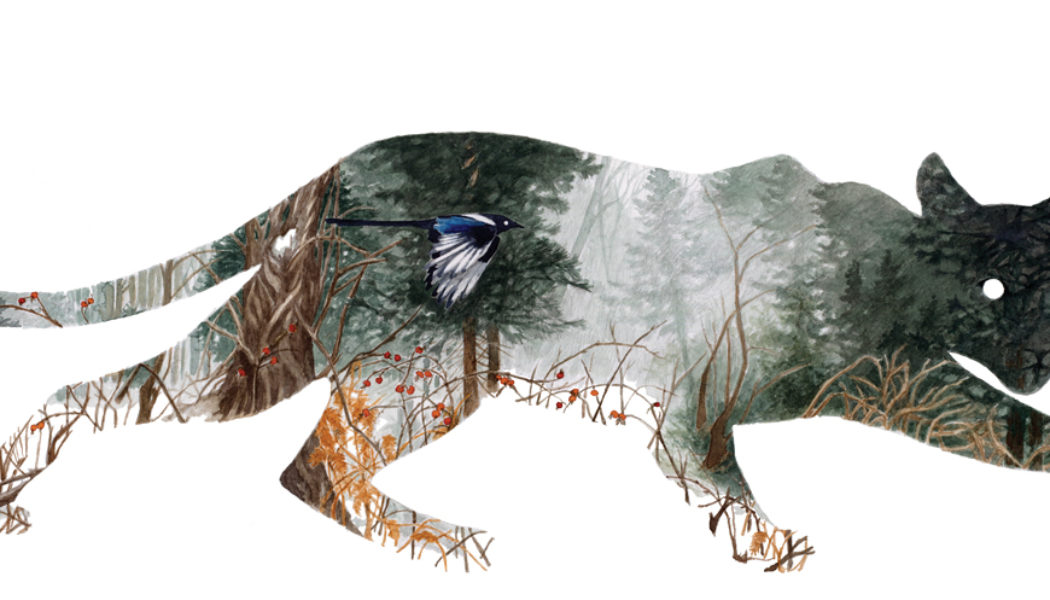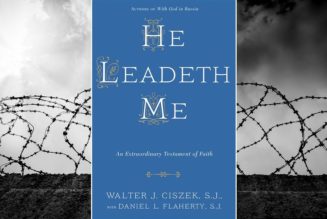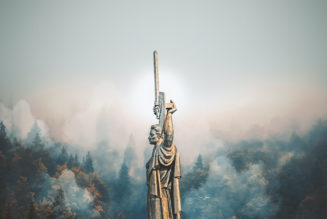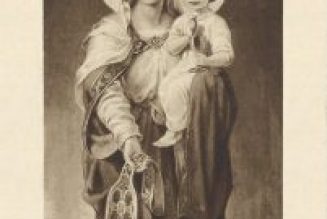Last winter, I went walking on a gray afternoon between storms. Meltwater pattered the snow around the ponderosas. Fog wound through overhanging boughs. My dog, Taiga, strained at her leash. We turned up a ravine, climbing toward an outcrop above our home where we could watch clouds river down the narrow Methow Valley, on the east slope of Washington’s North Cascades.
I turned my head and froze. Through the trees, a brown shape closed in. Not coyote. Not bobcat. Rounded ears; a long bow of tail. Seeing itself seen, the cougar dropped to a crouch a few paces from me. It was still woolly with kittenhood, but big enough to send a chill down my spine. Its golden eyes locked on mine.
Time suspended for a moment; I watched from outside myself.
I grew up in cougar habitat on Colorado’s Front Range. Summer camp came with instructions on what to do if you saw one. In 1991, the year I turned 10, a cougar killed a young man for the first time in the state’s recorded history. When I was a teenager, two little boys died in attacks. Later, backpacking and building trails in the state’s high Rockies, my friends and I told dark stories of cougars, making them the ghosts that haunted our adventures. But I had never met one.
Now, I numbly ran through that old camp advice: Don’t run; make noise. I yelled and hoisted Taiga over my shoulder. The cougar circled us, settled again. When I started to walk away, it padded after me. I raised my voice to a scream. It paused, uncertain, then vanished into the trees.
I soon heard from others in our neighborhood who encountered the cat — on the trail, peering through a glass door. A husband and wife woke one night to noises like wind in a tunnel. In the moonlight beyond their window, they saw an adult cougar sing-songing to a young one, a sound, the man said, “like nothing I’ve heard before or since.”
The couple phoned Lauren Satterfield, a cougar researcher who works in the valley. She set up motion-sensing cameras that revealed two juveniles and two full-grown cougars wandering among our forest-scattered homes. Satterfield and her crew captured one of them — not the half-grown cat I met, but an adult female. They fitted her with a GPS collar, then released her to transmit secrets about her life.
The familiar woods felt upended. I walked them now with a sense of vertigo, disoriented by these fleeting brushes with a creature of foreign compass, who navigated the serrated mountains and the tumbling tributaries of the Methow River, the small towns of Winthrop and Mazama and their Nordic skiing trails, according to experience and rules wholly its own. To recover my bearings, I called Satterfield and asked if I could follow her following cats.
SATTERFIELD IS DIRECT and plainspoken, and was blunt about my odds of seeing anything more. Collaborating with the state Department of Fish and Wildlife for her Ph.D. at the University of Washington, she’s studying how cougars are affected by wolves’ return to the state. I could join a collaring excursion, she said, but the cats are so elusive that, even with houndsmen and their tracking dogs, a team might collectively snowmobile 400 miles a day over a weekend and still catch nothing.
That invisibility has helped cougars persist, argues Jim Williams, regional supervisor for Montana Fish, Wildlife and Parks, in his book Path of the Puma. European colonists obliterated the cats in most of the East and Midwest. But unlike wolves and grizzlies, cougars hid well in the rugged West, and their preference for hunting over scavenging protected them from poison and traps. After bounty-killing programs ended in the ’60s and ’70s, the survivors reaped the benefits of rebounding deer and elk numbers, as well as growing public sympathy for predators. Cougar-hunting rules grew more protective. In the 1990s, voters ended cougar hunting altogether in California and banned the use of hounds for hunting them in Washington and Oregon. More than 90% of Washington residents surveyed in 2008 saw cougars as an essential part of ecosystems, with an inherent right to exist. Today, an estimated 30,000 wander the West, overlapping with people nearly everywhere, mostly unseen and thus, unremarked.
“Since mystery is the mother of exaggeration, the animal gradually acquired a reputation for prowess and lurking danger far beyond what it really deserved.”
But cougars’ invisibility has a downside. “Since mystery is the mother of exaggeration, the animal gradually acquired a reputation for prowess and lurking danger far beyond what it really deserved,” naturalist Claude T. Barnes wrote in 1960. Later, the West’s human population ballooned, sending more homes and recreationists into cougar habitat, and attacks on people rose from practically nonexistent to vanishingly rare. They total about 20 deaths in North America since 1890, and attacks on livestock and pets have risen, too — plenty enough to keep old terrors alive. In 1997, William Perry Pendley, then president of the Mountain States Legal Foundation, now acting director of the Bureau of Land Management, accused cougar defenders of condoning “human sacrifice.”
This mythologizing cuts both ways. Without direct contact, it’s as easy to revere cougars as harmless avatars of nature as it is to cast them as monsters. People whose families have lived in the woods for generations usually know a fair amount about cougars, said Satterfield. But others simply “know that they’re there, and that’s all they know,” she added, unless they’ve tried to learn more.
Into that cougar-shaped hole in experience go all kinds of visions, blotting the animal from clear sight just as fully as do its proclivities for cover and darkness. But with the help of camera traps, GPS tracking and other methods, science has drawn cougars partially into focus — and out of the shadows of story.
I MET SATTERFIELD and field crew lead Nate Rice on a cold March dawn. Frost haloed the river-bottom vegetation. Wind cheese-grated our faces as we snowmobiled along a ski trail, scanning among deer and domestic dog prints in the hard-packed snow for coaster-sized tracks — four toes with no mark from the retracted claws, lined over a large pad. Where dogs wend, Satterfield told me, a cougar walks deliberately, from somewhere to somewhere. But the only cat tracks we found appeared suddenly, four shallow skins of ice, then vanished.
Defeated, we trucked the snowmobiles to the rolling hills above the valley, abstract swaths of dun and white. Satterfield’s hands on the wheel were chapped with cold, crisscrossed with scars and scabs. The houndsmen helping with the study were waiting for us at a snowed-in road.
“I’ll tell you one thing,” one of them said after Satterfield passed him the telemetry antennae to check a collared cat that was nearby. “You’ll sure see the dogs run. I don’t know what it is out there” — he glanced at the dark forest beyond the road — “the cats learn to fly or something.” The hounds hauled at their leads, baying and eager to chase a cat into a tree, where it could be more easily tranquilized and collared. Let loose, they raced in the direction opposite from the one we’d expected.
Chaotic as it looked from behind four retreating dog butts, studies like Satterfield’s have revealed patterns in cougars’ lives. “What’s interesting to me is how dynamic they are,” she observed. “They navigate down in the river bottom and all the way to these slopes up here. They’ve been able to find a way to live in everything from Patagonia to Florida swamps, to the desert, to the forests here, to western Washington.” They chirp like birds to their kittens. And they’re individuals. “As soon as someone says they never do ‘X,’ ” she said, “some animal out there is going to go do that exact thing.”
Ambush predators, cougars are undeniably spooky, sometimes stalking silently for an hour or more before springing onto their quarry and delivering a crushing bite to neck or throat. Cougars also build worlds: By keeping deer, their primary prey, on the move and populations in check, they help vegetation thrive, sheltering a host of other species. In the Greater Yellowstone Ecosystem, cougar-killed carcasses have been shown to sustain 39 species of scavenging mammals and birds, and 215 species of beetle.
“For an animal to exhibit reciprocity, it needs to be smart enough and have a brain developed enough to interact based on memory.”
The cats have their own social order. Older males maintain large territories slotted together like puzzle pieces across available habitat, and females nest smaller home ranges inside. To establish a territory, young males must fight or leave; many die. That may be why cougar populations level off at consistent densities instead of exploding, as some critics warn. A male and the females in his territory may also form a sort of cougar neighborhood, where individuals occasionally share kills, perhaps on the assumption that the favor will be returned. “For an animal to exhibit reciprocity, it needs to be smart enough and have a brain developed enough to interact based on memory,” said researcher Mark Elbroch, author of the forthcoming book The Cougar Conundrum and director of Panthera’s Puma Program.
The upshot of these intricate interactions is that hunters may cause social disarray if they kill too many cats, opening once-stable territories to an influx of younger cougars. That could boost cougar activity in residential areas, as well as complaints.
But there is also evidence of how little most cougars want to do with humans — and how well they avoid us, even at close range. Near developed areas and high human traffic, cougars restrict their activities to between dusk and dawn, when people hunker inside. Even close to homes, they heavily favor wild prey over easier-to-catch domestic animals. Studies have shown they will flee from hard-won kills at the mere sound of a human voice. “We would probably be dumbfounded if we knew how few encounters are even recognized as such,” said Justine Smith, a wildlife ecologist at UC Davis.
Satterfield hopes to explore similar dynamics here in the Methow, where cougars flow down from the mountains in winter, perhaps following mule deer seeking forage in the valleys — habitats people also favor. Fitbit-like technology on some collars helps her suss out how homes like mine affect cougars’ hunting, for good or ill. They alert her crew to location-specific bursts of speed, so they can assess tracks in that spot, translating the animals’ remotely sensed movements into readable language.
By afternoon, though, Satterfield’s team had pursued only dogs through the hills, doubling back and again until the last was collected, still howling with the search. The most dramatic chase was one we found drawn in snow. Bound marks led from the shade of a big ponderosa into a wide depression, where one muscled body collided with another. A spreading pink stain. A drag mark. And finally, the spraddled remains of a deer, its ribcage hollowed, its hooves skyward. All around, tracks in blood and shadow — magpie, raven, eagle — the traceries of wingtips brushing the drifts, a roil of life pouring in after the cat’s kill, shown clear on the canvas of winter.
SCIENCE MAY NEVER fully dispel cougars’ mystery, but it can suggest better ways for us to make space for their lives. After years of study in collaboration with universities, for example, in 2013, Washington became the first state to restructure its sport hunt to preserve cougar social structure. Yet a lot of research is still ignored or not believed, said Department of Fish and Wildlife cougar and bear specialist Rich Beausoleil. “We’ve made incredible progress in some aspects of cougar management, but perception still outweighs science on so many fronts.”
And though public cougar appreciation has swelled, it’s distributed unevenly between urban areas and the rural places where people are more likely to contend with the animals. Outsized fear remains. In Alberta, Canada, in 2008, for instance, researchers found that more than half of survey respondents believed that their risk of a cougar attack was at least as great as their risk of a car wreck. That might be due to “cognitive illusion,” where people overestimate the occurrence of rare events because they’re memorable. And no wonder: Many get wildlife information from the media, which typically covers only extraordinary cougar behavior, like attacks on people.
In California, the number of complaints resulting in permits to kill cougars climbed steadily with human population growth from the ’70s through the ’90s. Then, after cougars killed two people in 1994, they ballooned — something researchers attributed less to a rise in cougar activity than to hyper-vigilance stoked by fear.
“We’ve made incredible progress in some aspects of cougar management, but perception still outweighs science on so many fronts.”
Something similar may be happening in Washington. The state logged nearly twice as many cougar reports in 2019 as in 2018, largely due to a jump in unconfirmed sightings. Cougars could be changing their movements because of changes in prey, and the state has stepped up efforts to encourage reporting. But it’s also notable that a cougar killed a person in Washington in 2018 — the second in state history. And like California in the 1990s, the state steeply increased the number of cougars it killed in 2018 and 2019 for attacking livestock and pets.
Those removals are concentrated in the state’s conservative northeastern corner, where wolves’ return has frazzled local nerves and left some feeling powerless. At a March 2019 wildlife commission meeting, area residents testified for two hours that a “serious overabundance of predators” was obliterating deer, slaughtering domestic animals and threatening people. The commission initiated an early revision of the cougar hunt, raising worries that the state will increase hunting in places where it already regularly exceeds guidelines set to preserve cougar social structure.
“We are at a precipice now with large carnivores,” said Anis Aoude, Washington state game division manager. With many species recovering, the next generation of biologists will face difficult questions: “How do they live on a landscape that’s dominated by people? Is that even possible in some places?” Cougars need big, wild land, but they’re better than most at living alongside humans. We are everywhere, increasingly. Can more of us accept visceral, actual proximity — and what that entails?
In theory, I’d say yes. My cougar encounter had come to feel lucky, and beautiful. But stepping into the woods with my dog at night, I remembered the fix of its inscrutable gaze. I had learned ways to lessen chances of trouble: Leash dogs; don’t feed deer; fence the attractive dry space under porches; keep pets indoors and chickens, goats and sheep in covered enclosures at night. “It’s like buckling your seatbelt,” as Satterfield said. I was starting to realize, though, that my gathering facts about cougars wasn’t the same as coming to understand them. The complicated mix of awe and fear I felt had little to do with what a cougar is likely to do, and everything to do with what it’s capable of doing. Layered with this was the guilty knowledge that, if something happened, it could easily be my fault — and the cat would be the one to pay.
ON OUR FINAL DAY TOGETHER, Satterfield backtracked possible cougar meals, indicated by multiple GPS points sent from the same location over time. We were on the trail of the cat she had collared in my neighborhood. Satterfield pulled the truck up to a rustic home in sage hills a few miles from my place. The couple who lived there, devoted wildlife watchers, told us they had noticed perfect tracks down their snowy driveway the previous fall.
“Most people aren’t surprised, but they’re usually interested in finding out what the cat was doing there,” Satterfield said. That’s part of what makes carnivore work challenging and engaging, she added. “People care, whether they like them or hate them, or they’re somewhere in the middle.”
We paced back and forth on a scrubby hillside near the two-week-old signal until we smelled the sourness of vegetation spilled from a deer’s stomach. Then, behind some bushes, a pile of wind-dulled hair and bone fragments. Satterfield jotted on a data sheet and we walked in widening circles, looking for a skull, a pelvis, any shard of story. There was nothing but a flock of juncos and some scat — the lion and the land keeping their own council, the invisible presence of the one rendering visible the wholeness of the other.
Later, I began to notice tracks in the snow. I found them along the road to my house, atop my own at the riverside. I knew the cat’s path had nothing to do with me: The river is a travel corridor with good cover and lots of deer. Still, each time I walked alone, I glanced behind me. That awareness was both uncomfortable, and a gift. It is easier to know a place as sentient if you feel it watching you back. Easier, too, to understand you play a part in its fate.
In November, I caught up with Satterfield in her final field season. My neighborhood’s collared cougar still wandered the valley, she told me, showing me a camera-trap photo on her phone. In it, the cougar stood sidelong, the bright night-coins of her eyes lit by the flash. It was my first glimpse of her. Perhaps, I thought, she felt herself watched, and, seeing no one, hurried into the night with a chill down her own spine. Then again, she seemed to look directly at me. I couldn’t shake the feeling that she had seen me before.
Sarah Gilman is a Washington-based freelance writer, illustrator and editor. She first wrote about her experiences with Satterfield and cougars for The Methow Valley News and The Last Word on Nothing. Email High Country News at [email protected] or submit a letter to the editor. Follow @Sarah_Gilman
This coverage is supported by contributors to the High Country News Research Fund.









